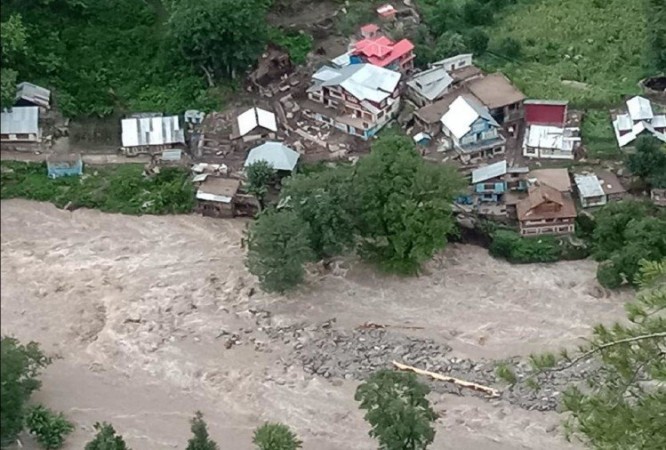
New Delhi: With Jammu and Kashmir, and Ladakh being hit by cloudbursts, experts on Wednesday said predicting this disaster is difficult as it is mostly a localised event and occurs in the hilly areas.
If 10 centimetres of rainfall is received at a station in one hour, the rain event is termed as cloudburst. This sudden discharge of a large amount of water not only leads to human casualties but also loss of property.
India Meteorological Department (IMD) Director General Mrutunjay Mohapatra said cloudburst is a very small-scale event and mostly occurs over hilly areas in the Himalayas or in the western ghats.
He said when warm monsoon winds interact with cold winds it leads for formation of huge clouds, which is also due to the topography or orographic factors.
Mahesh Palawat, Vice President (Meteorology and Climate Change) with Skymet Weather, said such clouds are called cumulonimbus and can stretch to even 13-14 kilometers in height.
If they are trapped over a region or there is a no air movement for them to disperse, they discharge over a specific area.
According to an explainer by the IMD on its website, “It is very difficult to predict cloudbursts due to its very small scale in space and time. To monitor or nowcast (forecasting a few hours lead time) the cloudburst, we need to have a dense radar network over the cloudburst-prone areas or one needs to have very high resolution weather forecasting models to resolve the scale of the cloudburst.”
“Cloudbursts do occur at plains, however, mountainous regions are more prone to cloud bursts due to orography.”
This month, cloudburst events were recorded in Jammu and Kashmir, Ladakh, Uttarakhand and Himachal Pradesh —- all hilly areas.
Mohapatra said, “Cloudbursts cannot be predicted. But we do give alerts of very heavy rainfall. Incase of Himachal Pradesh, we had given a red (colour-coded alert).”
M Rajeevan, Secretary, Ministry of Earth Sciences, said the incidents of cloudburst seem to be rising.
Although it is difficult to forecast cloudbursts, doppler radars can be very helpful in predicting them. Nowcasts can be given three hours prior to the event, he pointed out.
But not every place may have a radar, especially the Himalayan region.
According to a written response by Earth Sciences minister, Jitendra Singh in Lok Sabha on July 23, the Himalayan region has seven doppler radars — two in Jammu and Kashmir (Sonmarg and Srinagar), one each in Uttarakhand (Kufri), Mukteshwar (Uttarakhand), Mohanbari (Assam), Meghalaya (Sohri) and Tripura (Agartala).
Follow this link to join our WhatsApp group: Join Now
Be Part of Quality Journalism |
Quality journalism takes a lot of time, money and hard work to produce and despite all the hardships we still do it. Our reporters and editors are working overtime in Kashmir and beyond to cover what you care about, break big stories, and expose injustices that can change lives. Today more people are reading Kashmir Observer than ever, but only a handful are paying while advertising revenues are falling fast. |
| ACT NOW |
| MONTHLY | Rs 100 | |
| YEARLY | Rs 1000 | |
| LIFETIME | Rs 10000 | |













